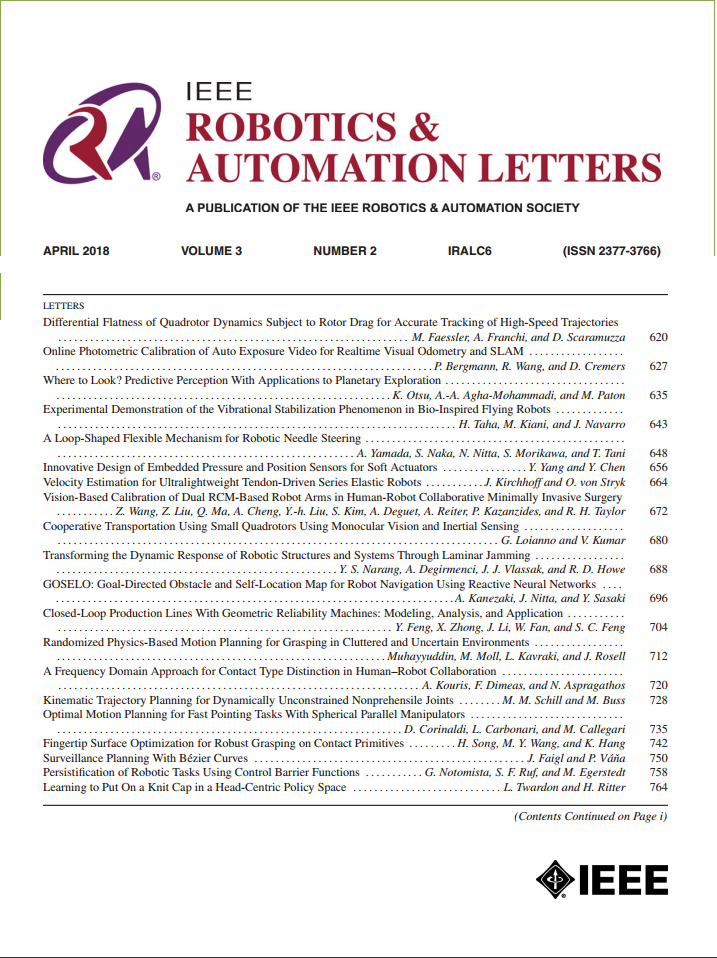基于强化学习的任务参数化动态运动原语改进运动规划
IF 4.6
2区 计算机科学
Q2 ROBOTICS
引用次数: 0
摘要
非结构化环境中的在线轨迹规划对移动机器人提出了重大挑战,特别是在导航复杂障碍物时。传统的从演示中学习(LfD)方法依赖于离线数据集,限制了它们适应不同障碍物形状和动态条件的能力。为了解决这些限制,我们提出了一种新的运动规划框架,将全局轨迹生成与局部适应性相结合。动态运动原语(Dynamic Movement Primitives, dmp)用于生成基于演示的全局轨迹,而任务参数化势场(Task-Parameterized Potential Fields, tppf)用于增强局部适应性。采用路径积分策略改进算法(PI$^{2}$)对模型参数进行优化。TPPF框架由两个关键部分组成:(a)避障场,该避障场考虑了机器人的尺寸、障碍物尺寸和相对距离,允许在不进行大量建模的情况下进行有效的体积避障;(b)一个有吸引力的领域,引导机器人走向特定的任务目标,同时引导它远离不受欢迎的路径。通过利用PI$^{2}$算法,优化模型参数以产生保留演示运动特征的轨迹,同时提高障碍物回避和任务导向导航。在模拟和动态现实场景中进行的实验验证了所提出框架的有效性,与基线方法相比,显示出更平滑的轨迹和增强的避障能力。本文章由计算机程序翻译,如有差异,请以英文原文为准。
Task-Parameterized Dynamic Movement Primitives With Reinforcement Learning for Improved Motion Planning
Online trajectory planning in unstructured environments poses significant challenges for mobile robots, particularly when navigating complex obstacles. Traditional learning-from-demonstration (LfD) methods depend on offline datasets, limiting their ability to adapt to varying obstacle shapes and dynamic conditions. To address these limitations, we propose a novel motion planning framework that combines global trajectory generation with local adaptability. Dynamic Movement Primitives (DMPs) are employed to generate global trajectories based on demonstrations, while Task-Parameterized Potential Fields (TPPFs) enhance local adaptability. The Policy Improvement through Path Integrals (PI$^{2}$ $^{2}$
求助全文
通过发布文献求助,成功后即可免费获取论文全文。
去求助
来源期刊

IEEE Robotics and Automation Letters
Computer Science-Computer Science Applications
CiteScore
9.60
自引率
15.40%
发文量
1428
期刊介绍:
The scope of this journal is to publish peer-reviewed articles that provide a timely and concise account of innovative research ideas and application results, reporting significant theoretical findings and application case studies in areas of robotics and automation.
 求助内容:
求助内容: 应助结果提醒方式:
应助结果提醒方式:


